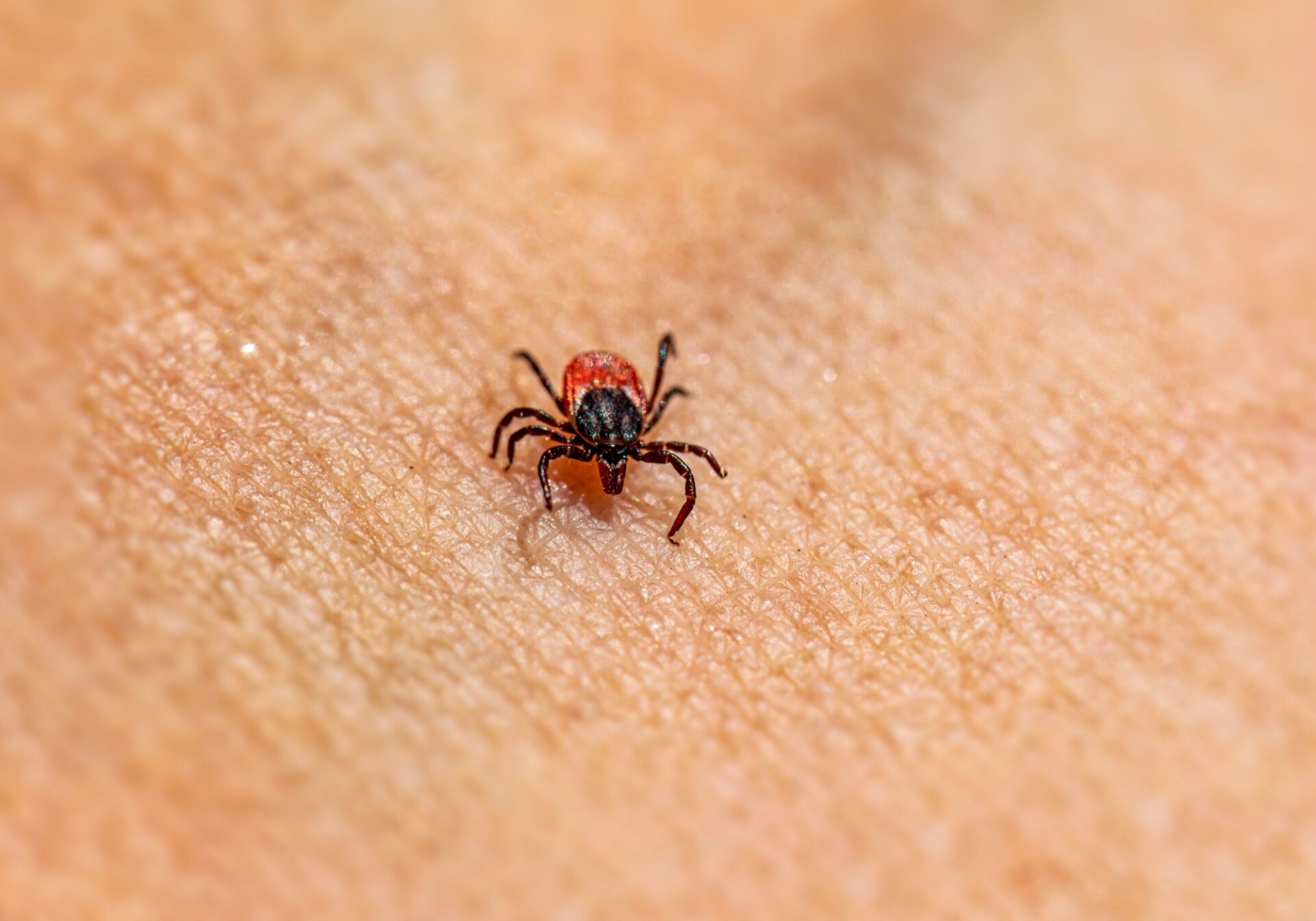ChatRx uses advanced AI to accurately diagnose the symptoms of tick bites and prescribe medications as needed.
**Not for emergency use. Care is provided with physician oversight. AI assists clinical workflow only. For concerning or urgent symptoms, call 911.

Tick bites can potentially lead to serious, even life-threatening, illnesses such as Lyme disease, Rocky Mountain spotted fever, and ehrlichiosis.
By understanding the steps to take after a tick bite, you can safeguard your health and reduce the likelihood of developing debilitating tick-borne infections.
Start your symptom assessment now!
The ChatRx Free Symptom Checker is Available!
Preventing Tick Bites
- Use insect repellent containing DEET or other EPA-registered ingredients when spending time outdoors
- Wear long-sleeved shirts, long pants, and closed-toe shoes when in areas known to have ticks
- Perform thorough tick checks after being in wooded or grassy areas
- Remove any attached ticks promptly using fine-tipped tweezers
Treating a Tick Bite
- Wash the bite area with soap and water
- Apply an antiseptic cream or ointment to the site
- Monitor the bite for any signs of redness, swelling, or the development of a bull’s-eye rash, which could indicate Lyme disease
Antibiotic Prophylaxis for Tick Bites
- In certain high-risk situations, a single dose of the antibiotic doxycycline may be prescribed to prevent the development of Lyme disease
- This preventive measure is typically only recommended for tick bites that occur in areas with a high incidence of Lyme disease and when the tick was attached for 36 hours or more
Seeking Medical Attention
- If any concerning symptoms develop, such as a rash, fever, or flu-like illness, seek medical attention immediately
- Inform the healthcare provider about the tick bite and any relevant travel or outdoor activities
- Early diagnosis and appropriate treatment are crucial to preventing serious complications from tick-borne illnesses
Tick Removal Techniques
- Use fine-tipped tweezers to grasp the tick as close to the skin as possible
- Pull the tick straight out, avoiding twisting or jerking motions
- Disinfect the bite area and your hands after removing the tick
Preventing the Spread of Tick-Borne Illnesses
- Properly dispose of any removed ticks by flushing them down the toilet or sealing them in a plastic bag
- Clean and disinfect the area where the tick was found to eliminate the potential for further exposure
Tick-Borne Illnesses and Their Symptoms
- Lyme disease: Characteristic bull’s-eye rash, fever, chills, and flu-like symptoms
- Rocky Mountain spotted fever: Fever, rash, headache, and nausea
- Ehrlichiosis: Fever, headache, fatigue, and gastrointestinal symptoms
Addressing Concerns about Tick Bites
- Seek prompt medical attention if any concerning symptoms develop
- Follow the recommended steps for tick removal and prevention to minimize the risk of contracting a tick-borne illness
- Communicate openly with healthcare providers about any exposure to ticks or outdoor activities that may have increased the risk of infection
Tick bites can have serious consequences if not properly addressed. By taking proactive measures to prevent tick exposure, promptly removing ticks, and seeking medical attention when necessary, individuals can significantly reduce the risk of developing debilitating tick-borne illnesses.
Remove the tick as soon as possible. The risk of contracting Lyme disease increases significantly when a tick remains attached for more than 24 hours.
Concerned about a recent tick bite? ChatRx’s assessment tool can help evaluate your risk factors and recommend appropriate next steps.
Consider saving the tick in a sealed container with a moist paper towel for potential identification. This can help healthcare providers determine risk factors if you develop symptoms. Some state health departments also offer tick testing services.
Early signs might appear within 3-30 days and may include:
- A bull’s-eye rash (occurs in about 70-80% of cases)
- Fever and chills
- Muscle and joint aches
Fatigue
Not all ticks carry diseases, and different species transmit different illnesses. For example:
- Deer ticks (blacklegged ticks) primarily transmit Lyme disease
- Dog ticks typically carry Rocky Mountain spotted fever
Lone star ticks can transmit ehrlichiosis
Monitor the bite area and your health for at least 30 days. Watch for:
- Expanding rash
- Flu-like symptoms
- Joint pain or swelling
- Unusual fatigue
Yes, pets can carry ticks indoors. Protect your household by:
- Using veterinarian-approved tick prevention on pets
- Checking pets after outdoor activities
- Keeping lawn grass short
- Creating barriers between wooded areas and your yard
While uncommon, some people might experience late-stage Lyme disease symptoms months or years after infection if the initial infection wasn’t treated. These may include:
- Joint pain and swelling
- Neurological symptoms
- Memory or concentration issues
- Persistent fatigue
Not sure if your symptoms relate to an old tick bite? ChatRx can help evaluate your condition and recommend appropriate next steps.
Early testing might not always detect Lyme disease. Important points to consider:
- Tests measure antibodies that take weeks to develop
- False negatives can occur in early stages
- Multiple tests might be needed
- Clinical symptoms remain important diagnostic factors
